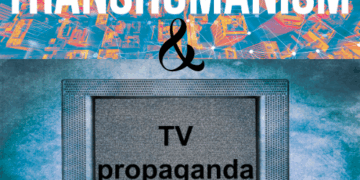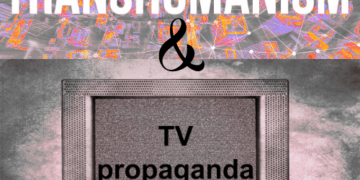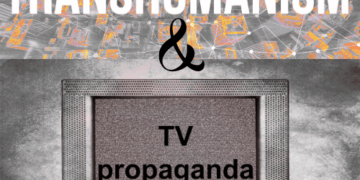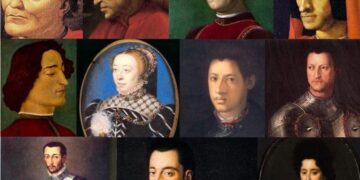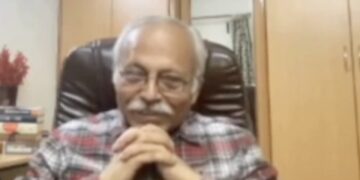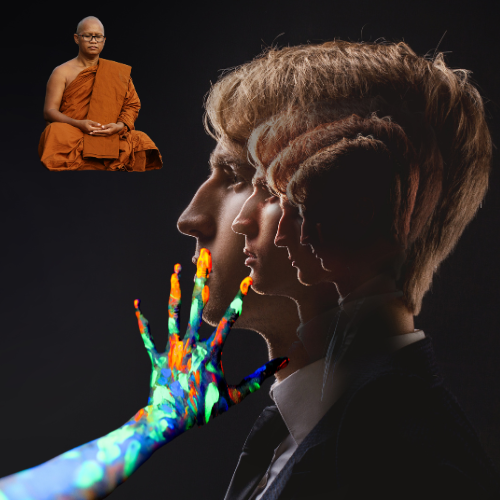- General Information
- Health
- Society
- Media
- Become a MemberPREMIUM
- Events
- Contact Us
- Shop
- Categories
- Access to Health
- Ageing & Longevity
- Asset-Based Community Development
- Community & Health
- Ecology & Environment
- Economic & Political Root Causes
- Economic Stability
- Education
- Environmental Contaminants
- Ethnicity & Gender
- Health Condition of the Body
- Holistic Approach
- Law & Human Rights
- Men’s Health
- Natural Medicine
- Nutrition & Food
- On A Philosophical & Ethical Note
- Political Acceptance & Opposition
- Race
- Social Determinants of Health
- Traditional Medicine & Adjuvant Therapies
- Transhumanism
- Wellness
- Women’s Health
PSYCHOLOGY OF ART AND MEDITATION: PART 1
Lofty Definitions
“Before the end of Time will be the end of History. Before the end of History will be the end of Art.”
– Hegel
“Those who possess greatness from on high do so by straining toward that incomparably perfect One, who awaits. For these, there is no entrance to the realm of the spiritually dead. There is neither fear nor anxiety, not even regarding death. They recline into what is at eternal rest, without tiring of or confusing Truth, but remaining in the Truth. Their Fatherly Source is inside and inside is where it is found, perfectly inseparable from the highest Good. They want for nothing, at rest and reenergised by the Spirit. They listen to this Root and busy the self with the most fundamental issues of being, suffering no loss to the Soul. Such is the natural state of the blessed, as ought to be. As for states of being outside that resting place, I cannot advise.”
– Gospel of Truth (retranslated)
These articles explore the philosophical meaning of high Art and its relationship to religion, metaphor, abstract thought, metaphysics, and meditation. The underlying importance of Art is its transformational action on mind in joyful gratitude to metaphor. The performance of true high Art is extremely metaphorical. As humans experience works of Art even before they can communicate, these works and their performances are the most common introduction to metaphor, and therefore metaphysics.
CEASELESS PRAYER
Most modern religious prayers involve recitations of begging, praise, and thankfulness. It is very unlikely that these are the types of prayers that the Apostle Paulus was recommending when he said, “rejoice always, pray without ceasing” (1 Th 5:16). Repetition of the same things without ceasing would give a person very little to rejoice over. Begging is not a happy affair either, desperate and humbling as it is. Most people interpret this as implying a regular ritual of prayer, however this is not what it says. It says without ceasing, which means without stopping. What could he mean by praying ceaselessly? Without ceasing is never-ending so what kind of happy praying to God would be without end? It would need to be entertaining, otherwise why would somebody be drawn to persist?
The etymology of “prayer” is in a Latin root, meaning to ask or beg. The Proto-Indo-European root carries the meaning of questioning or interrogating. This was a simple enough concept when people would go to altars and temples to speak to their god and interrogate them, for favours or answers to important questions. They would literally ask their god, not in their own heads but directly to the statues. Paulus taught people to engage an internal dialogue, but what does it mean for it to be without ceasing? Was he in the middle of prayer when talking to people? He also wrote about being inspired, what did that entail? Did he not admit to meditation as he wrote the epistles by calling them inspired?
MEDITATION
| Name of school | Activity | State | Goal |
| Transcendental (Various) |
Repetition of mantras (still; sitting) |
Resting | Personal development and states of consciousness |
| Vajrayana (Northern Buddhist) |
Visualisation of deities. Repetition of mantras (still; sitting) |
Peaceful clarity | Awareness and Nirvana (non-tantric) |
| Zen
(Zen Buddhist) |
Concentration on mantras and no mind (still; sitting) |
Calm focus | Awareness, awakening, and Nirvana |
| Vipassana (Theravada Buddhist) |
Observation of the body and mind (still; sitting) |
Calm | Awakening, insight, liberation, and Nirvana |
| Prayer (Western Christian) |
Recitation of written prayer or variation. Contemplation of errors (still; sitting or standing) |
Calm | Praising God and self-improvement |
| PROSEUCHE (Early Christian gnostic, i.e., “learned”) |
Internal dialogue. Contemplation of universals and errors (still or active; sitting or standing) |
Resting focus | Union with God |
| Manteia (Hellenistic Philosophy) |
Contemplation of abstracts, virtues, and universals. Internal dialectic (mostly still; standing) |
Focused clarity | Conscious and subconscious mutuality (Union with God) |
Table 1 – Different forms of meditation along with the philosophic Manteia
The word Paulus used was PROSEUCHE which was very different from the later concept of Latin prayer. The word PROSEUCHE implies an orientation to wishing, and not the wishing itself, which was EUCHE. Cognates to EUCHE in various Indo-European languages include terms to do with promise, pronouncements, sayings, and words. This is also the root for a word meaning “learned.” This implies an additional layer of insight from this orientation toward wishing. In another way, it could be transliterated as positioning the self “toward the promise,” which would fit with his basic contentions regarding spirituality and the law. He believed that those who absorbed the religious laws had transformed by complete incorporation, so that every action is in accordance. He wished people to be transformed by renewing their minds (Rom 12:2).
Paulus, according to the gnostic Christians, often wrote to two different classes of people at once, so that many verses in the epistles had dual meanings. In this way prayer could be words spoken in praise to God however this was only the beginning, and part of ceaseless PROSEUCHE in renewing the mind with meditation and constant rejoicing. Valentinus received the gnostic “heresies” from his teacher, Theudas, in Alexandria. In turn, Theudas learned them from his teacher, the Apostle himself. There is much evidence that the PROSEUCHE Valentinus engaged, as part of Paulus’s traditions, was a form of meditation that developed the Spirit (Tilghman 2016). The text of the Gospel of Truth, which was used by the original Valentinians and various gnostic groups, confirms this interpretation, as seen in the quote provided at the beginning of this article.
PHILOSOPHY OF INSPIRATION
What brings greatest joy is the discovery of Truth through logic, SOPHIA in NOUS through LOGOS. This was Valentinus’s and Paulus’s PROSEUCHE, an internal dialogue contributing to the human dialectic, LOGOS, through the resultant transformation and actions. This is what the philosophers variously called meditation, inspiration, or prayer. The divine spark manifests itself into reality out of potentiality, creatively.
It may be one of the most deeply pleasurable experiences of which human beings are capable. The performance of metaphor is the immanent reflection of the metaphysical creative factor. Instrumentation of metaphor in practised meditation is what the Hellenic philosophers called Manteia. It is the most effective way to train skills in abstract reasoning. It seems praying for the gnostic Christians was an approach to God, a mental state of readiness and openness to insight.
Pythagoras taught, much like other sages, that human wisdom amounted to nothing so long as it could be altered by man. He argued that all true wisdom, which is to say Truth, belonged to God, the One, what Plato confirmed as the greater NOUS, or mind. This is why he chose the appellation of “philosopher” instead of “sophist,” that is lover of wisdom rather than wise-man, because real wisdom never belongs to man, because man cannot adapt the Truth.
This was a very important distinction for him, which inspired generations of philosophers bearing the same title. For Pythagoras and his students, wisdom was derived through the workings of the common Spirit, the One, beyond the mind, so all that is left to humanity is to love it. This means a person can choose to hate Truth or love it. Therefore, wisdom is only demonstrated by those most aligned in mind to the One, i.e., lovers of the wisdom. That this perfect wisdom is another way of saying Truth in reality, it is also the foundation of all Reason.
REASON WITH CREATION
For the Pythagoreans, God, Oneness, empowered all thought. However it is ideally manifest as the cause of two primary elements: Reason and Creation. Reason and Creation are the most Godly factors. In this way, Reason is access to higher wisdom and Creation is access to the metaphysical, that is higher Art. To attain to both is Manteic.
Before philosophers, the rules of God or gods were relative and seemingly arbitrary because the character traits assigned to them were less than ideal. It was Pythagoras who determined it was necessary to assign only higher ideals to God or none at all. This was because the Reason visible in the World and Universe could not have been arbitrary. Creation, like God, is best grounded to Reason, the Good, just as Spirit-infused life is dashed against the rocks of the material. Such is the primary materialistic method of improvement.
Arts achieve improvement in mental skills, aligning the aspects of Reason in grant of elevational motive (Roe 2023). Abstractive metaphor through higher Art is mentally formative to underlying reasoning skills behind virtues: honesty, perseverance, and analysis. Without the grounding of Reason, any Creation will necessarily be some form of nonsense.
Reason guides utility, and requires purpose to direct the Spirit upwards, exhorting the mental energies. Evolutionary change in life occurs in response to the immutable laws set into the fabric of the Universe. Physical laws dictate the boundaries by which that life can be defined, mortally. This is similar to how Reason defines the value in Creation, shaping the self toward moderation, or alignment with the Universe.
PHILOSOPHY’S RELIGIOUS ART
What the term “philosophy” meant was a challenge to discover God’s wisdom through the authority of reality alone, which is the foundation of science. Many sophists would allow their imaginations to run wild and then give those imagined things precedence, from which stemmed countless ridiculous religious notions. Many mental meanderings SHOULD BE as wild as a philosopher can reasonably ground back to reality in the end, and so long as they are assuredly in control. Most importantly, it must be of intellectual value, i.e., rational, True, and universal.
In this way, religion is a philosophical Art. Within religious divination and passions are found a powerful reflection of the human spirit. Religion is the Art of achieving the optimal and most coherent reflection of human Spirit. Where they most often fail, however, is in explanations of origins and unseen things. The unseen began as something immanent for the esoteric gnostic Christian, or learned in the secret teachings, which was expanded to include exoteric elements. This original gnostic esoteric teaching is recognisably influenced by Pythagorean and Platonic thought.
An appropriate definition of Art must encompass religion. Historically the most prized works of imagination were those of artists who achieved moderation, or reason, with the greatest triumph. They are often thought to have some additional insights or wisdom to share through their Art, due to their experience and as proved by their godly, or creative, eye. True Art is creative generation as Reasoned expression of Spirit. In Resurrexit Theory, elevational motive is a measure of the determination of spirit toward Reason (Roe 2023). The willingness to dive deeper into realms of potentiality is a product of the creative confidence, and moves the spirit toward Art and culture (Roe 2023). To identify True Art, one must ask, is it realistic? Is it metaphorically representing abstract notions of universals in Art, culture, life, or religion? Is it rational? The answers to all three must be yes for the qualification of True Art.
TRIUMPH OR VICTIMHOOD
More recently, this heroic triumph in Arts is mistaken for simple victimhood. This is a cultural stigma that can only exacerbate perceived offensiveness, and then real victimhood. True glory is in height of achievement, not the depths of whatever preceding depravities. That a person had difficulties is simply the challenge that is overcome, and not the aspect to be glorified.
However, modern media would have it that victimhood itself is the glory, which is to say strangeness and weakness. It is then this enshrined victimhood that is encouraged to have a voice, in politics and Art, with no special insight. They are promoted and given prominence. But the resultant artworks are not Art. They are arbitrary wastes of supplies without any meaning for the human Spirit.
Real artists have been pushed out of the “art world.” Artists that can paint a romantic scene with deep meaning are undesirable. Who do the “art world” seek? Wretches who draw lines, splatter paint, and arrange garbage bins. Many people do not understand how this could have happened. The problem is that real and authentic artists have too much spiritual power, where addicted and spiritually broken people are much easier to manipulate. The vacated industry can be used for nefarious purposes, such as evidenced by human trafficking connections (Shaw 2020) and money laundering (Pope 2022), by non-artist materialists. These materialists own the galleries or studios and are usually envious of artistic popularity, if not the talent itself for the material prestige. It is not simply ironic that the sin of envy is opposite to that of excellence. It is excellence that feeds Art. Envy feeds contempt for Art, excellence, Truth, and universals, as unnecessary and expensive.
ART IS METAPHYSICS
In many philosophies, religion is placed in its own heading under the umbrella of culture, often alongside Art and music. However, some religious beliefs rise to the level of pure metaphysics outside of culture, and some religious tenets are primarily logic-oriented. I believe it is more appropriate to place metaphysics next to logic, directly within philosophy. Within metaphysics is Art, and then within Art is culture. God’s Art is metaphysics, the parent category to human Art. Religion places across the spectrum in the various categories, though typically Art and mostly within culture.
Since religion is Art, and Art is essentially metaphysics, it is important to explore the depth of Art, metaphor, and abstracts generally, as well as their purpose. The point of these exercises is to define important parameters of reality-grounded yet metaphoric and spiritual Art, i.e., Reason attuned Creation. By determining these parameters within the self, it becomes easier to understand how Art defines religion, culture, and imagination.
SUMMARY
Subsequent articles in this series will describe what is necessary to achieve Manteic expression, including Art and meditation. At the end of the series, advanced meditation techniques will be shared that are designed to unlock more ready access to the dialectic mind (Roe 2023), however a person must be prepared first before attempting. Attempting these meditation techniques without the preparation is impossible. This form of meditation is what the Hellene philosophers called Manteia, the bridging of conscious and subconscious for active creative generation. This process was developed through necessity. It is the task of philosophers to dig deeper, seeking more from within the self to share.
REFERENCES
Pope, H. (2022). Art World Vulnerable to Money Laundering, U.S. Authorities Observe. Organised Crime and Corruption Reporting Project.
Roe, M. A. (2023). Resurrexit Spiritus parts 1-7. Humani-Well.
Shaw, A. (2020, December 8). Christie’s and Sotheby’s ordered to disclose dealings with the late sex offender Jeffrey Epstein. The Art Newspaper – International Art News and Events.
Tilghman, J. (2016). Valentinus, the Bridal Chamber, and Meditation: Part 5 of the Development of the Orthodox Church. Spirit of the Scriptures.
Disclaimer
The views and analysis expressed in this content (video, blog, article, etc.) are solely that of the author and does not necessarily reflect the views of humani-well, the organisation, or other associated parties.
Medical disclaimer: you should not rely on the information on this website as a replacement for seeing a doctor or other qualified healthcare provider for a diagnosis or treatment. Nothing in this publication should be interpreted as a substitute for the advice of a qualified healthcare provider. Please consult a medical professional before using any information contained in this publication.
Dr. Marcus Aurelius Roe
Branded 'genius' by other staff. Holds degrees in Business Administration, Information Systems, Political Science, Organisational Psychology and Philosophy. A philosopher challenging your deepest thoughts. Not everyone's cup of tea. Beware, and learn! Know More
© 2025 Humaniwell | CHOOSE WISELY. Powered by NoCodeLabs.







